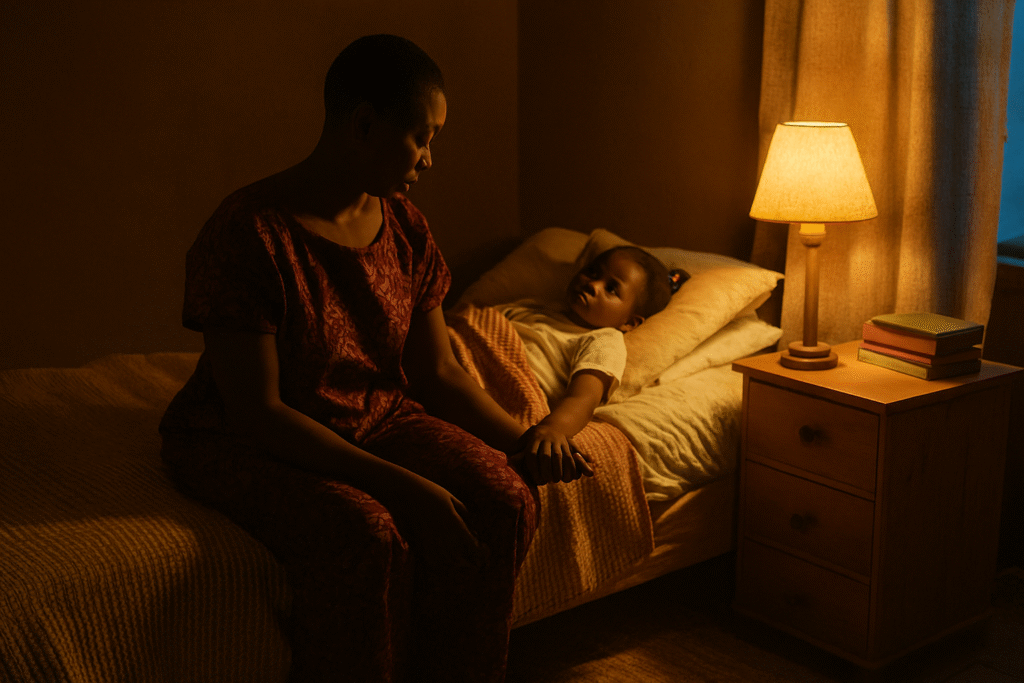Bedtime can feel like a wrestling match—teeth, chores, prayers, one more cartoon. But there’s a quiet ten‑minute window that, if we honour it, becomes a tunnel straight into a child’s heart. No lectures. No fixing. Just presence.
Why this window matters
When the lights go dim, the nervous system winds down. The day’s noise lowers, and the part of the brain that guards “tough feelings” is less defensive. Children—especially those who struggled at school or with siblings—finally have words.
What it looks like
- Lights low. Phones out of the room.
- Sit on the edge. One hand on their back or holding a hand.
- Ask two simple prompts:
- “What made you smile today?”
- “What was hard today?”
- Reflect: “You felt embarrassed when the teacher called on you and you weren’t ready. That was tough.”
- End with, “Tomorrow we try again. I’m here.”
Nigerian context (real life, real schedules)
Power may go off. You may return late from work. There may be younger siblings. If ten minutes feels impossible, start with five focused minutes. Quality over quantity.
If your child resists talking
- Offer drawing. “Can you draw your day?”
- Offer play. Small cars, dolls—let the story come out indirectly.
- Offer choice. “Lights off or bedside lamp?”
Common mistakes to avoid
- Turning it into a performance review (“Why did you score 7/10?”)
- Advice too soon (“Next time do this…”)—reflect first, coach later.
- Multitasking (replying chats while nodding). Children know.
Try this week
- Mon–Fri: Protect ten minutes after lights out.
- Keep a tiny notebook: one sentence a night about what you heard.
- After one week, tell your child one change you’re making based on their words.
Try it for 7 nights. If it helps, tell another parent. We build calmer homes by sharing what works.

